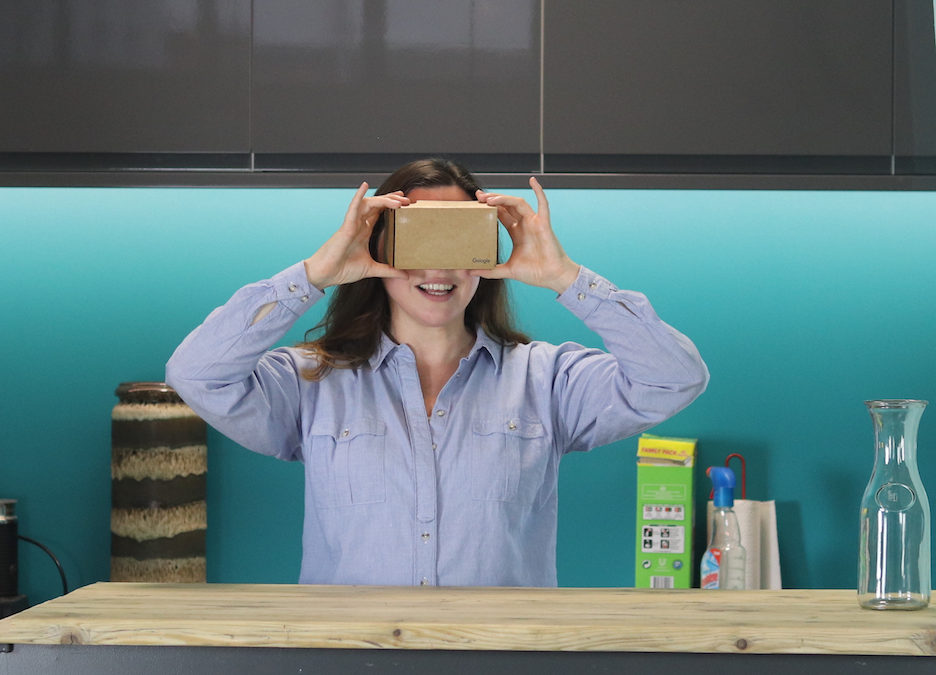A frequent discussion point about using virtual reality in research is that VR isn’t actually real. The inference is that when people are immersed in a virtual environment they won’t behave normally. It’s a fair question, however our observations on live research studies, and those of our research partners, is that VR is very real to respondents. Consumer research has, in fact, always sought to create ‘dual realities’ and it’s only now – with virtual reality – it can be done properly.
The idea of dual reality is quite simple: when people feel present in a VR experience it appears real to them and their body reacts as if the virtual world is actually real. Cognitively, they’re aware that they’re wearing a VR headset and what they experience is not genuine. This ‘duality’ is the levity of VR when your body reacts to the virtual world even though you know it isn’t real. Extreme examples are virtual rollercoaster rides which – no matter how hard you try – you can’t stop your body naturally compensating for the movement you’re experiencing. Our VR research environments are less dramatic (as you don’t want a trip to the shops to feel like a fairground ride!) but you hopefully get the point.
It’s tempting to think of dual reality as being an entirely new idea but it describes a number of experiences we commonly have. Take, for example, watching a film. You’re in the cinema, you know where you are and that the things you are seeing on the screen are pretend. Yet you still jump, laugh, cry and have an emotional and physical response in the same way you would if you were responding to real events. You still know you are in the cinema and know you’re experiencing fiction, but you still react as if it’s real. The same is true at the theatre, watching TV or playing a video game. All of these experiences are dual reality – you know it isn’t real but you react as if it is.
In consumer research, dual reality accurately describes the state with which people are studied. A good example of this is a shelf test where physical products are placed on a physical shelf at a viewing facility or in the research company’s offices. Respondents are asked to pick their preferred product as if they were in a store. In other words, respondents are studied in one reality (e.g. a viewing facility) and are expected to believe it’s a representation of another reality (e.g. a real store) and to behave and act accordingly.
Research presents people with new product ideas and asked them whether they would purchase them. People know they are doing research but have to imagine what they would do if they actually encountered the product in store. In quant ad tests, it’s common practice to ask if an ad is ‘noticeable’ or even ‘persuasive’. Again, this asks respondents to imagine a second reality which isn’t sitting in front of a laptop in a meeting room and answering questions. Even ethnographic research – which is meant to be observational – is conducted in a real setting where people still know they are being watched. They’re asked to be in a second reality and to behave as if nobody else is there.
All these examples of traditional research methods have one reality of a respondent being in a research situation and another one with them imagining they’re in a second ‘real world’ reality. Consumer research asks respondents to mentally reconstruct a second reality and, the simple fact is, virtual reality is a better tool to help them do it. The question about whether VR measures ‘normal’ behaviour is therefore a mute point. The question should be: how compelling is the second reality outside of the research experience?
Historically, the only cost effective way to conduct research is for the second reality to be purely imagined. Now, with virtual reality, respondents inhabit and experience much more compelling realities. They’re immersed in street scenes and exposed to advertising, stand in a shop and view products on shelves, look at new point-of-sale fixtures before they’re built and explore a new car before it’s in the showroom.
So, no, VR is not reality. It does however create a very compelling second reality compared to asking respondents to imagine it themselves. Virtual reality transforms research, it fundamentally changes how research is conducted and it delivers more accurate predictions about the products consumers will actually buy in the real world.


Recent Comments